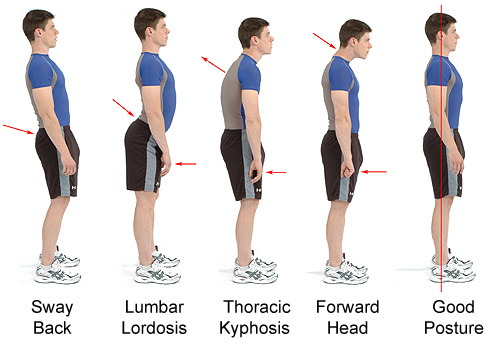
Body mechanics, biomechanics, proper lifting or safe lifting are all terms that can be used to describe ways to safely handle materials at work and home. Your body and your spine are designed to handle pressure and movement with lifting, carrying, pushing and pulling. However, when you move something in an awkward way, you risk injuring your back. Twisting in particular is a high-risk activity.
The human spine is at its strongest when in proper alignment from side to side, and with all the curves correctly positioned from top to bottom. When the spine is too curvy, it can buckle against pressure and place more force on each vertebrae and impinge upon spinal nerves and disks. If the spine is too straight, it can be too rigid and lack sufficient give to rebound against pressure. It’s a lot like the story Goldilocks and the Three Bears. The spine is at its strongest and most resilient when the curves and alignment are “just right.”
Safe load handling is about getting your spine “just right” while sitting, standing, walking and while performing tasks in any or all of these positions. It’s not just for lifting heavy items. Using your back efficiently is important for every lift, every carry and every push. Developing a strong core and thinking through the lift before even touching it will reduce the risk of injury.
Proper body mechanics with load handling starts with planning and organizing. Evaluate the situation and determine if moving the object is within your ability. If not or if in doubt, ask someone to help you. If you think it’s within your ability, make sure that the object is stable and that you have a clear path to your destination. Remove any obstacles or obstructions before you lift or move the object.
Bring the object close to your body and keep it as close to your core,* and between hip and shoulder levels, as possible. This is where your best strength is located. Stabilize your core and lift with your legs – leading with your head and shoulders, not your buttocks. Don’t hold your breath, but exhale with exertion. Now move the object. Always watch where you are going. Don’t plant your feet or lock your knees. Always lift your feet and move your body all together rather than twisting; secure the load, and then turn with your whole body. Save the twisting for the dance floor, to your favorite Chubby Checker’s song!
Once you’ve reached your destination, lower or place the load with the same attention to your body’s position as you had when you picked up the object. Activate your core. Lower the object using your legs, this time leading with your buttocks not your head and shoulders. Use your back wisely with all load handling activities and it will continue to hold you up and be there for you when you need to move the next item along.
*Your core muscles are the group of muscles around your body often defined as “core muscles.” The role of the core muscle group is to support your spine and stabilize your posture. A stable posture is a key component of good body mechanics.

References
osha.gov – Occupational Safety and Health Administration
LNL.wa.gov – Washington State Labor and Industries
aota.org – American Occupational Therapy Association
Four Steps to Proper Lifting: http://www.lni.wa.gov/IPUB/FSP0-918-000.pdf
Lifting Tips: http://www.lni.wa.gov/IPUB/417-055-909.pdf

